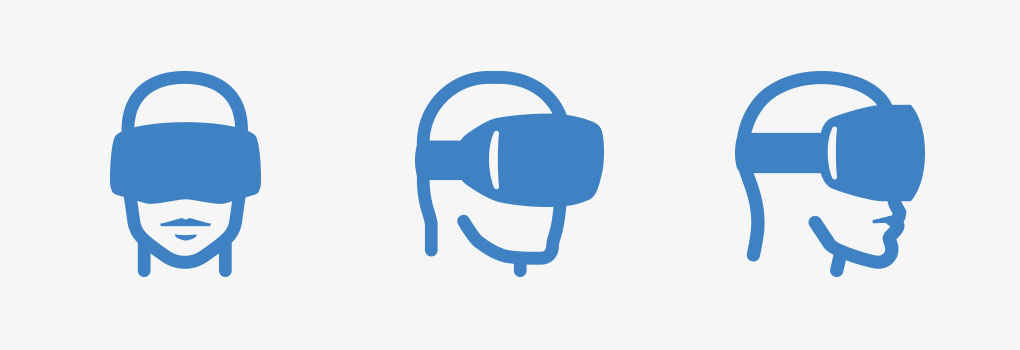When choosing a Virtual Reality (VR) headset, understanding the concept of Degrees of Freedom (DoF) is crucial. DoF refers to the number of ways a rigid object, like a VR headset, can move through three-dimensional space. There are six degrees of freedom in total, which describe every possible movement of an object in VR.
In this blog, we’ll explain the difference between 3-DoF and 6-DoF headsets, how they impact your VR experience, and help you decide which one suits your needs..

Image showing the difference between 3-DoF (rotational movement) and 6-DoF (rotational and translational movement) with a VR headset.
What Are Degrees of Freedom (DoF) in VR?
Degrees of Freedom (DoF) in VR refers to the movement capabilities of a device. Essentially, it’s how freely you can move in the virtual world, whether through rotational or translational motions. Understanding DoF is key to selecting the right VR headset for your use case.
There are six total degrees of freedom that define movement in space:
- Translational Movement: 3 axes of translation — moving forward or backward, left or right, and up or down.
- Rotational Movement: 3 axes of rotation around the x, y, and z axes — this is often referred to as pitch, yaw, and roll.
In the context of VR, these movements determine how immersive and interactive your experience will be. VR headsets and input devices typically come in two types of tracking: 3-DoF and 6-DoF.
Video example of the difference between 3-DoF and 6-DoF
- 3-DoF: Tracks rotational movement only. You can look around but can’t move through the VR environment.
- 6-DoF: Tracks both rotational and translational movement. You can physically move around within the VR space, making for a more interactive experience.
3-DoF headsets
3-DoF headsets are the simplest form of VR tracking. They can track rotational motion (how you move your head) but not translational motion (where you move in space). With a 3-DoF headset, the system can detect:
- Looks left or right
- Rotates their head up or down
- Pivots left or right
With 3-DoF, we cannot determine whether the user has moved (translational movement) about the scene by moving in real life.
Examples of 3-DoF VR headsets:
- Google Cardboard
- Oculus Go
- Merge VR
- Samsung Gear VR
- Google Daydream
How is 3-DoF tracking achieved?
3-DoF headsets provide the simplest form of user tracking in VR. It relies mostly on inbuilt sensors (accelerometers, gyroscopes and magnetometers) that devices (such as a smartphone) use to measure movement.
6-DoF headsets
6-DoF headsets provide a more immersive experience by tracking both rotational and translational movement. This means the system can detect whether the user is moving forward, backward, up, down, or side to side, in addition to their head movements. With 6-DoF, you gain the ability to move:
- Forward or backward
- Laterally or vertically
- Up or down
This type of tracking is important for VR experiences with translational motion and gives the user a lot more freedom to explore locations, inspect details and perform real life tasks in VR.
Examples of 6-DoF VR headsets:
- Oculus Rift
- Oculus Quest
- Pico Neo
- HTC Vive
- Windows Mixed Reality
- Apple Vision Pro
How is 6-DoF tracking achieved?
There are various ways to achieve this. Early versions of 6-DoF headsets typically use positional tracking sensors (usually two physical devices positioned around the room which can track headset movement) – for example the Oculus Rift is embedded with infrared LEDs which are monitored by two 30cm tall sensor towers positioned approximately 1.5m apart.
Modern VR headsets may use inside-out tracking to achieve 6-DoF. From the Microsoft Mixed Reality documentation: “the tracking system uses two visible-light low-resolution cameras to observe features in your environment, and fuses this information with IMU data to determine a precise position of the device in your environment.”
Choosing the Right VR Headset for Your Needs
The type of VR headset you need depends largely on your use case and business application. While 3-DoF headsets are more affordable and suited for simpler experiences, 6-DoF headsets are ideal for more interactive and complex VR simulations.
Here are some examples to highlight applications across the two:
3-DoF:
- Watching 360 degree videos or images
- Viewing the interior of a house in VR before purchasing
- Practicing delivering a speech at a conference
6-DoF:
- Car mechanic inspecting the engine of a vehicle
- Cooking simulator training the user how to make a meal
- Action games where the user needs to avoid objects (e.g. bullets)




